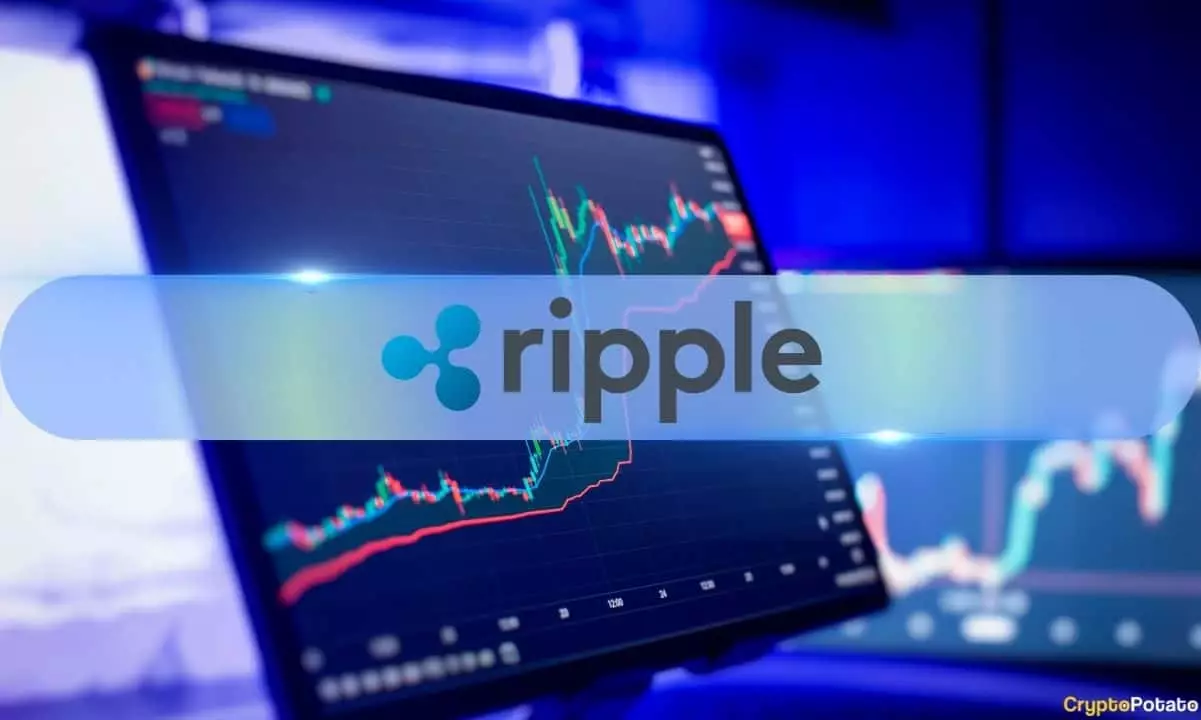In a landscape littered with uncertainty and stagnation for most cryptocurrencies, XRP has achieved a remarkable feat, showcasing a staggering 295% gain year-over-year. As many investors grappled with losses in familiar crypto giants like Bitcoin and Ethereum, XRP’s journey is not only a testament to its resilient nature but also shines a light on the complex dynamics of regulatory battles and market sentiment. While many might see this as a mere fluke or an anomaly, the underlying factors behind XRP’s propulsion suggest a narrative that deserves deeper exploration—the intertwining of legal victories, institutional acceptance, and strategic maneuvers within the sector.
The Seismic Legal Victory: Ripple vs. SEC
The narrative surrounding XRP’s rise cannot be divorced from its recent legal triumph against the U.S. Securities and Exchange Commission (SEC). Ripple’s victory not only vacated the $125 million fine—now slashed to $50 million—but also reinstated XRP’s legitimacy as a digital asset. This fascinating turn of events has naturally activated a surge of interest from institutional investors who had previously remained hesitant to engage with a token marred by regulatory uncertainty. As Ripple CEO Brad Garlinghouse noted, the SEC’s retreat from its prolonged appeal represents more than just a legal win; it serves as a resounding message that the crypto sphere must recalibrate its interactions with regulatory bodies.
This profound shift does not merely hold economic implications; it reshapes the entire ecosystem’s perception of compliance and legal frameworks. Ripple’s ability to not just survive but to thrive amidst such scrutiny positions it as an anomaly within a space often criticized for its lack of accountability. As regulators begin to redefine their approach, XRP may very well become the poster child for navigating these turbulent waters, possibly paving pathways for others to follow.
XRP’s Market Performance: A Dazzling Rally
The market performance metrics for XRP underline a bullish sentiment that diverges alarmingly from the downtrend faced by its peers. Breaching the $3.40 mark early in 2025 is a historical landmark that deserves recognition. Such rapid appreciation in the absence of a supportive market environment—where Bitcoin was stagnant and Ethereum faced plummeting values—is indicative of a growing belief among investors in XRP’s intrinsic value and its burgeoning utility.
Nonetheless, caution must be exercised, as evidenced by the recent pullback to $2.12. A 2.5% dip in just 24 hours and a week-long slide of 6.5% remind us that despite XRP’s resilient narrative, the volatility characteristic of cryptocurrencies remains. The juxtaposition of XRP’s 295% growth against its competing cryptocurrencies poses an uncomfortable question: are other blockchain assets ready to pivot or evolve to capture similar market enthusiasm, or will they falter in XRP’s shadow?
Institutional Adoption: The Ripple Effect
Institutional backing for XRP has continued to deepen, further bolstered by Ripple’s monumental acquisition of Hidden Road. This $1.25 billion deal signals ambition and confidence, positioning XRP as a critical player within traditional financial infrastructure. The integration of Ripple’s stablecoin in Hidden Road’s post-trade workflows marks a substantial stride towards legitimizing XRP’s utility beyond speculative trading.
Meanwhile, portfolio diversification strategies by heavyweight firms like Franklin Templeton and the CME Group reflect a growing recognition of XRP as a legitimate asset. Such institutional maneuvers endorse a far-reaching sentiment that cryptocurrencies are not just a passing trend but rather a core component of the modern financial machinery.
Challenges Ahead: On-Chain Activity and Scaling Concerns
Despite the current euphoria surrounding XRP, one cannot overlook the cautionary signs flashing red. On-chain activity has contracted significantly, with reports noting a drop in transactions and new wallet creations. A 37% decline in transactions and a 40% dip in new wallet creation raise concerns about sustainable growth. This suggests that while the market may be reacting positively to external factors, the internal dynamics of user engagement and activity warrant serious scrutiny.
As Ripple’s incorporation into broader financial mechanisms takes shape, it will be increasingly vital for it to foster a healthy user ecosystem that maintains engagement levels. The potential for XRP to transform and redefine digital asset transactions is immense, but without the necessary grassroots support and utilization, there stands a significant risk of complacency setting in—a fate that can undo even the most promising prospects.
XRP’s ascent in a time fraught with challenges highlights both the potential and the peril inherent within the crypto market. The delicate balance of regulatory progress, institutional investment, and user engagement will ultimately determine if XRP can maintain its breakneck pace forward or if it will succumb to the cyclical nature of the cryptocurrency realm.














